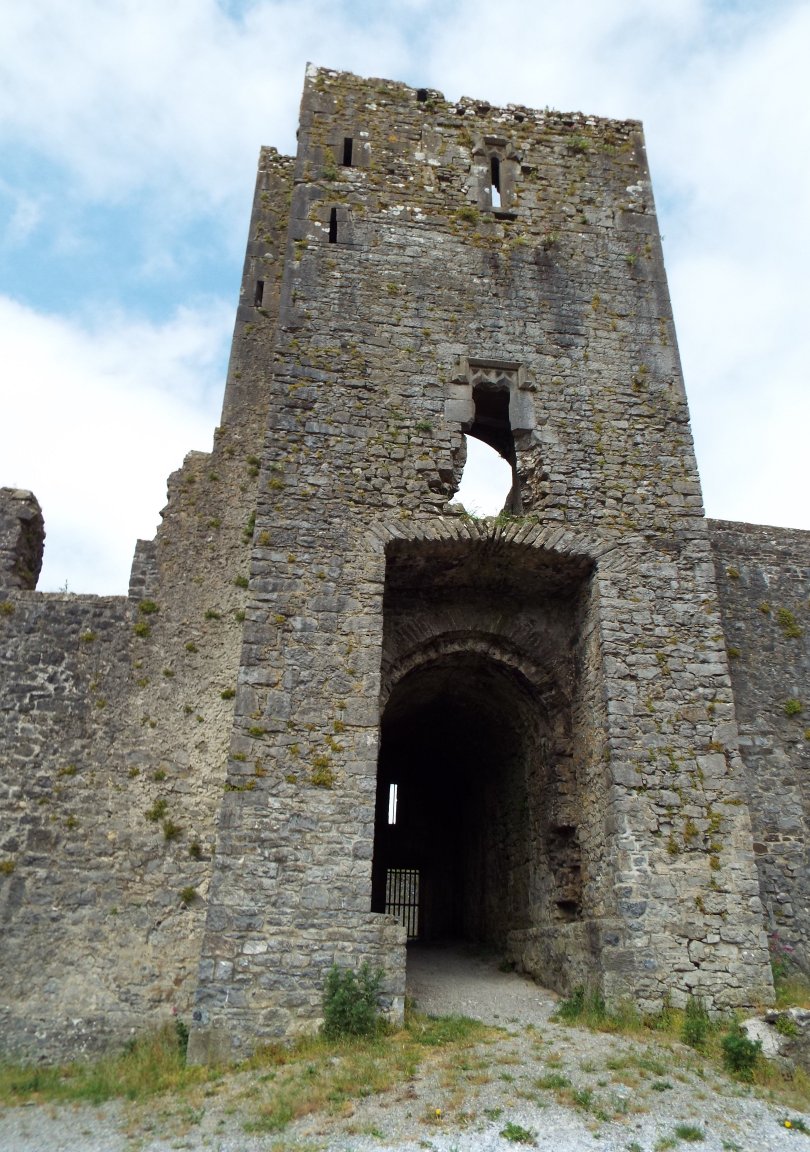Liscarroll

The castle was built by the Barrys [Manorbier], apparently in the thirteenth century. It seems to have had a quiet history until it was
taken by Lord Castlehaven for the Confederates from Sir Philip Percival
in 1642. The castle surrendered to 7,500 men on 2 September after
a 13 day siege. A seventeenth century sketch shows the castle much as it is
today, except for his moat and a ravelin before the
gatehouse. The castle was returned to the Percivals in the 1650s.
Description
Set on a low limestone outcrop commanding flat rolling countryside, the
fortress consists of a rectangular ward, 200' by 145' with 4 boldly
projecting round corner towers, each some 26' in diameter. All
have strong plinths as would be expected on a wet site. The gatehouse, set centrally in the south wall,
is rectangular, 40' by 23' with a small rectangular stair turret at
it's internal north-east corner. It projects just 6' beyond the
curtain, but 28' internally. The barrel vaulted plank centred
gate passageway was defended at either end by a gate and had a
portcullis in between. The 2 upper storeys were reached via a
projecting stair turret although a later vice was added in the corner
of the curtain. In the fifteenth century the gatehouse was blocked to formed
a towerhouse, although this blocking has since been removed. A
small, barely projecting garderobe turret is opposite the gatehouse in
the north wall and a postern is beside the north-west tower in the west wall.
The 4 corner towers all had ground floor entrances and a single loop
at that level. The upper floors were reached via mural
vices. There are no trances of internal buildings.
The castle is tolerably complete apart from breaches
in the south wall, on either side of the gatehouse, and heavy damage to the
(rebuilt) south-east tower which also contained the well. This damage was
probably caused during the siege, although the hole nearest the gatehouse
on the east side was the site of the gateway made when the gatehouse was
converted to a towerhouse. The castle is very reminiscent of
Skenfrith castle in the Welsh Marches built in the 1220s, apart from it
has no central round keep.
Perhaps you would like to join me in
visiting this and other great castles of Ireland in
October with Scholarly Sojourns. Details of the trip can be
found by clicking
here.
Copyright©2019
Paul Martin Remfry

